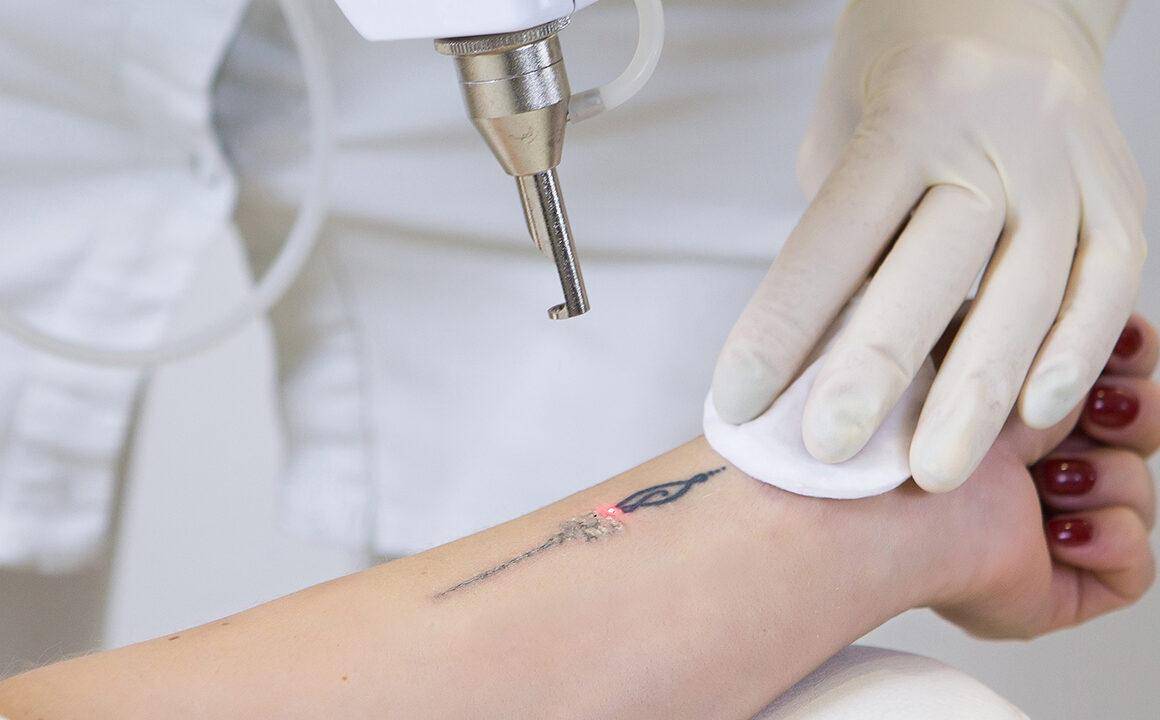What You Need To Know About Laser Tattoo Removal

Tattoos have grown increasingly popular over the years. It’s now considered a form of art or self-expression, and there’s no limit to the designs you can think of. Unfortunately, there will come a time when a person will no longer find a tattoo attractive, perhaps because it’s of poor quality or because it reminds them of something unpleasant, like a bad relationship. You can go through a laser tattoo removal procedure if you plan on getting it removed.
It may be best to know everything about it when it’s your first time undergoing the procedure. Here are several crucial considerations you need to keep in mind.
What Happens During A Laser Tattoo Removal Procedure?
Today, various methods are available to remove tattoo ink. Still, laser tattoo removal is preferred due to its effectiveness and low risk of serious side effects. The procedure became well-liked and reasonably priced due to advancements over time.
The ink particles in tattoos can be challenging to remove. Generally, the body perceives the ink particles as foreign bodies. Due to this, the body continues to break them down and eliminate them with the help of white blood cells. Sadly, it’s ineffective due to the large size of the ink particles. However, the white blood cells can slowly deteriorate the ink, resulting in tattoos fading over time.
Laser treatment may be suitable if you want to remove a tattoo effectively. During a tattoo removal procedure, a specialized laser is used. It can quickly produce hot blasts to warm and disintegrate the ink particles. The white blood cells respond to the laser’s breakdown of the ink particles by capturing them and bringing them into the liver, where they will be flushed out along with other foreign entities and toxins.
A laser tattoo removal procedure may be an effective option for most cases. Remember that the process will take several sessions to remove any tattoo thoroughly.
Are There Preparatory Measures Before The Procedure?
Preparing for laser tattoo removal involves a few measures, such as knowing if some medications or contraindications may disrupt the overall effectiveness. It’s also essential to protect the area for treatment from direct exposure to the sun for a minimum of four weeks before treatment and avoid tanning beds or applying self-tanning products for at least 8–12 weeks before your session.
Is The Procedure Uncomfortable?
The laser tattoo removal procedure involves focusing the laser beam on your skin, and the tolerance level for pain varies for every person.
Some claim to have experienced significant discomfort, while others compare the pain level to getting their first tattoo. After a session, expect a certain degree of lingering soreness, similar to having a minor burn or blister.
How Many Sessions Are Needed To Remove A Tattoo?
For each individual, the tattoo and skin type are unique. Due to this, the removal process will vary. Whether you have an amateur or professional tattoo, its depth, size, and ink color dictate the number of treatments necessary. Even the location of the tattoo and your immune system are contributing factors.
The majority of tattoo removal treatments typically take between five and ten sessions. Consulting a professional would be best, so you’ll know the number of sessions needed to remove your tattoo.
Is There A Time Frame Between Sessions?
The time frame between the tattoo removal sessions is usually around six to eight weeks. It allows your body’s immune system a chance to get rid of deteriorated ink particles effectively.
Are There Side Effects To The Tattoo Removal Process?
After a tattoo removal procedure, some individuals will likely experience transient discoloration or redness around the treated area. Some people experience a brief episode of skin-lightening. In most cases, the skin may return to its original tone within a few months after the last treatment.
The chances of scarring are minimal. Observing proper aftercare measures will play a key role in ensuring the treated area heals properly. If scabs and blisters form, avoid picking them since doing so can lead to permanent scarring.
What Are The Aftercare Measures?
Like any procedure, following the aftercare instructions is crucial to ensure the best outcome. Some of the standard aftercare instructions after undergoing a laser tattoo removal procedure may include the following:
- Keep the treated area clean after every session.
- Avoid exposing the area to physical activities that can induce heat in the skin, especially during the initial 24 hours. If you’re going to shower, use warm water and avoid scrubbing the site.
- Avoid direct exposure to the sun.
- Avoid direct contact due to the potential for injury, especially picking or scratching.
- Avoid applying makeup.
As you can see, these are the basic aftercare measures to keep in mind to ensure the best outcome.
Final Thoughts
The laser tattoo removal procedure may be ideal if you want to remove a tattoo effectively. Over the years, it has been the preferred choice by individuals who wish to let go of an undesirable tattoo. When it’s going to be your first time, knowing the basics about the procedure is crucial. Considering these insightful pointers about the procedure will give you a good head start.
Share via:





Leave a Comment